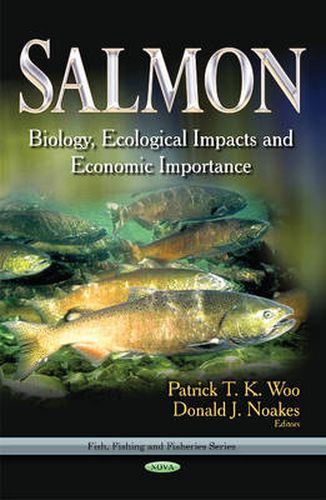Readings Newsletter
Become a Readings Member to make your shopping experience even easier.
Sign in or sign up for free!
You’re not far away from qualifying for FREE standard shipping within Australia
You’ve qualified for FREE standard shipping within Australia
The cart is loading…






This book provides a good mix of both basic and applied topics in the hope that it will be useful and of interest to scientists working on finfish. It has 15 chapters written by 27 contributors and many of them are highly respected scientists. Given the global importance of salmon, contributors are from many countries including 11 from Japan and Russia. These authors bring slightly different and important perspectives to the book, and their expertise and research may not be known to many young scientists in Europe and in the Americas. The volume starts with an overview of salmon, their economic and social importance, and their impacts on the environment. Subsequent topics include morphological, physiological and behavioural differences between wild and farmed salmon; growth, food utilisation and water flow requirements of wild and hatchery salmon; the real and potential ecological impacts of sea cages and hatcheries; the potential use of waste product (gelatine) from the salmon industry; salmon behaviour and genetics including their broad applications that contribute to our understanding of fish biology, and nutritional and anti-nutritional factors in salmon culture. There are also chapters on environmental impacts and the economic importance of the commercial fishery and salmon farming industry; these are very important components of the industry, especially to the seafood sector.
$9.00 standard shipping within Australia
FREE standard shipping within Australia for orders over $100.00
Express & International shipping calculated at checkout
This book provides a good mix of both basic and applied topics in the hope that it will be useful and of interest to scientists working on finfish. It has 15 chapters written by 27 contributors and many of them are highly respected scientists. Given the global importance of salmon, contributors are from many countries including 11 from Japan and Russia. These authors bring slightly different and important perspectives to the book, and their expertise and research may not be known to many young scientists in Europe and in the Americas. The volume starts with an overview of salmon, their economic and social importance, and their impacts on the environment. Subsequent topics include morphological, physiological and behavioural differences between wild and farmed salmon; growth, food utilisation and water flow requirements of wild and hatchery salmon; the real and potential ecological impacts of sea cages and hatcheries; the potential use of waste product (gelatine) from the salmon industry; salmon behaviour and genetics including their broad applications that contribute to our understanding of fish biology, and nutritional and anti-nutritional factors in salmon culture. There are also chapters on environmental impacts and the economic importance of the commercial fishery and salmon farming industry; these are very important components of the industry, especially to the seafood sector.